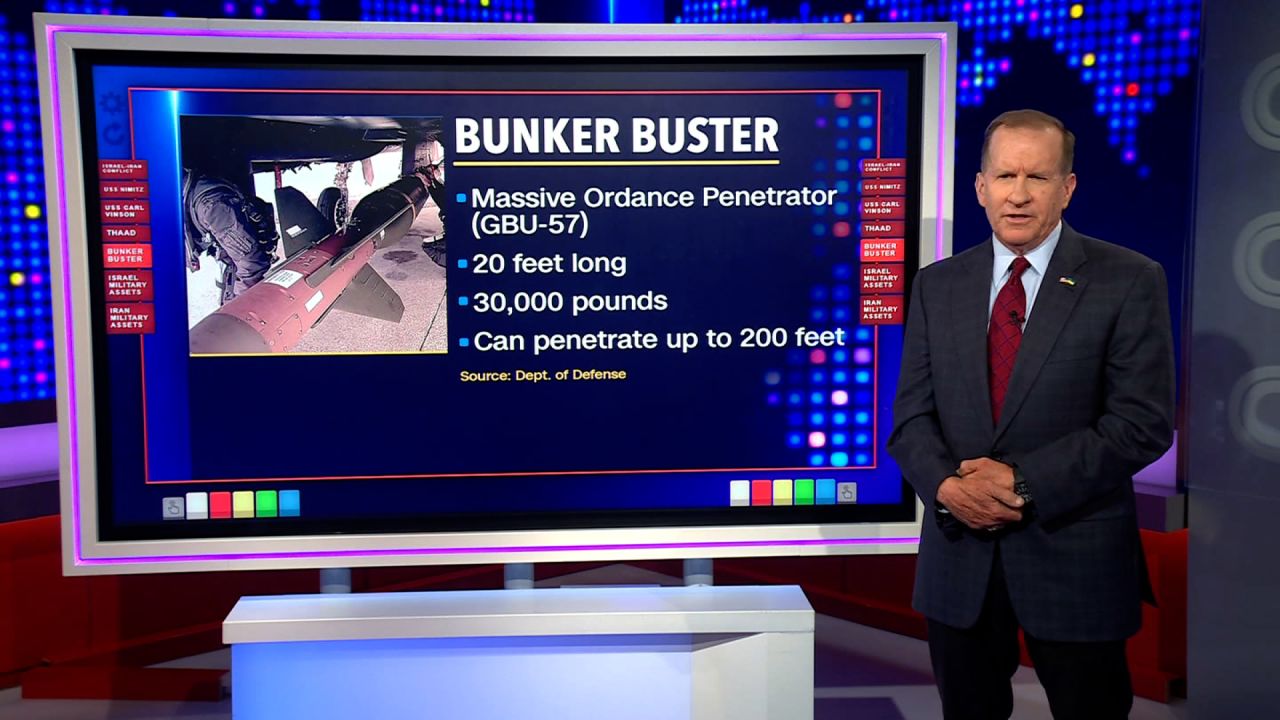
Source: edition.cnn.com
Image content: The image shows a news studio segment with a presenter standing beside a large screen. The screen displays a slide titled “Bunker Buster,” describing the Massive Ordnance Penetrator (GBU-57) with specs such as 20 feet long, 30,000 pounds, and penetration up to 200 feet, along with a photo of the weapon.
Summary
Israel and Iran have escalated into sustained, reciprocal strikes that have inflicted significant damage on parts of Iran’s nuclear program and fueled broader regional risk. The IAEA reports likely destruction or severe impairment of centrifuges at Natanz due to power loss, the destruction of the above‑ground pilot enrichment plant producing up to 60% uranium, and damage to multiple facilities in Isfahan, while Fordow appears largely intact. Israel claims the campaign has set back Iran’s nuclear capabilities and has targeted military figures and infrastructure, as Iran launches repeated missile barrages in response. Civilian casualties are mounting, evacuations and internet disruptions are spreading in Iran, and international actors—especially the United States—are weighing deeper involvement, including potential use of bunker‑buster capabilities, amid warnings that further escalation could broaden the conflict.
Key Points
- IAEA confirms severe damage to Natanz support systems and destruction of a 60% enrichment facility; Isfahan sites also hit, Fordow largely spared.
- Israel claims major setbacks to Iran’s nuclear program and strikes on military and media targets; Iran responds with missile waves.
- Civilian toll rises with hundreds killed, evacuations in Tehran, and widespread disruptions including airspace closures and internet outages.
- U.S. signals possible involvement; Israel presses for bunker‑buster use against Fordow as Washington holds high‑level security talks.
- Escalation risks grow after an IAEA resolution on Iranian breaches and amid continued Israel‑Iran exchanges.